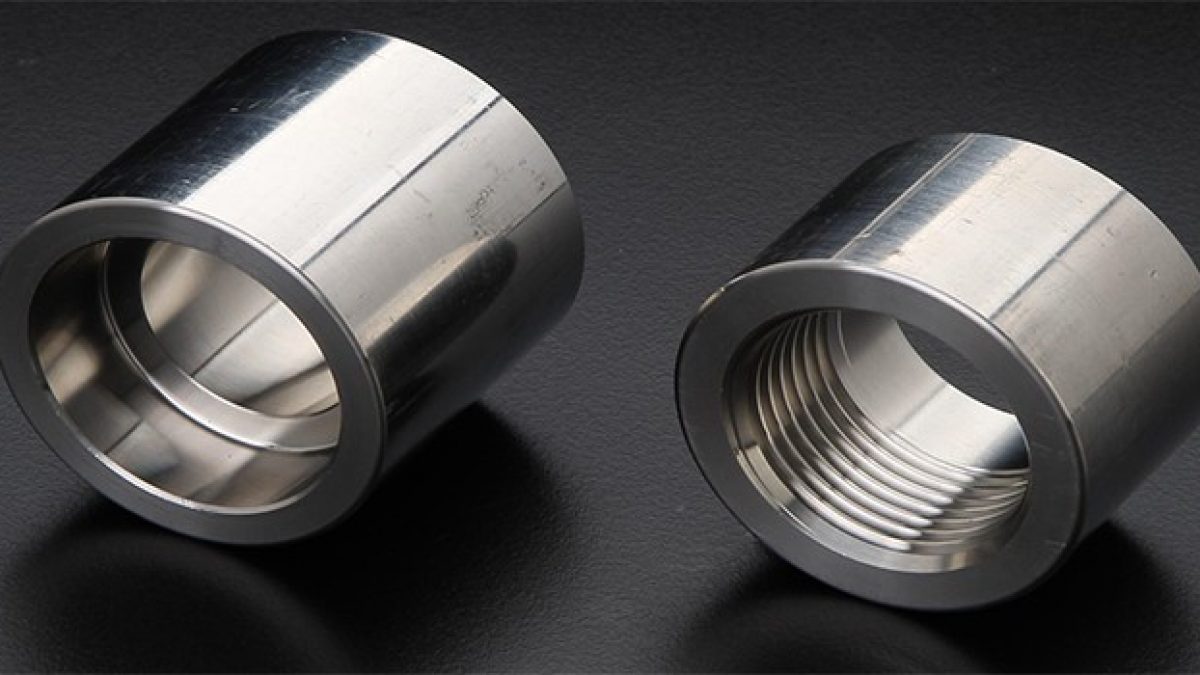Stainless steel couplings are crucial in various industries, providing a reliable means of connecting two pipes or tubes. These components are essential for ensuring fluid or gas transfer, structural integrity, and preventing leaks in piping systems. Manufacturers prefer stainless steel for manufacturing couplings because of its corrosion resistance and durability. Stainless Steel Coupling plays a crucial role in ensuring a secure and leak-free connection, contributing to fluid or gas transfer’s overall integrity and efficiency within various industries. Due to its corrosion resistance, durability, and versatility, manufacturers prefer to use stainless steel in manufacturing these couplings.
Types of Stainless Steel Coupling
Threaded Couplings:
Manufacturers design threaded stainless steel couplings with internal threads to facilitate easy connection with externally threaded pipes or fittings. This type of coupling is popular for its simplicity and ease of installation, making it suitable for a wide range of applications. People commonly use threaded couplings in plumbing and other systems where periodic disassembly may be necessary.
Socket Weld Couplings:
Socket weld couplings have sockets at both ends, allowing pipes to be inserted into the coupling for welding. The joint created by socket welding enhances the overall strength of the connection. In high-pressure and high-temperature applications, such as petrochemical and chemical industries, users widely employ these couplings.
Compression Couplings:
Compression couplings utilize a compression ring or ferrule to create a tight seal around the pipes. Tightening a nut compresses the ring and ensures a leak-resistant connection in the coupling. This type of coupling is suitable for applications where ease of installation and the ability to disassemble the connection are important.
Slip-On Couplings:
Slip-on couplings, or plain-end couplings, slide over the pipe ends without requiring threading or welding. Bolts or other fastening mechanisms secure them in place. In industrial settings where versatility and speed are essential, slip-on couplings are convenient for quick installations.
Flanged Couplings:
Flanged couplings feature flanges at each end, allowing pipes to be bolted together. These couplings are commonly used in piping systems where alignment flexibility and easy disassembly are necessary. Flanged couplings are prevalent in water treatment, chemical processing, and HVAC industries.
Advantages of Stainless Steel Coupling
Corrosion Resistance:
SS couplings are corrosion-resistant, making them ideal for harsh environments where exposure to moisture or chemicals is a concern. This property ensures the longevity and reliability of the coupling in various applications.
High Strength and Durability:
Known for its high tensile strength and durability, stainless steel is a versatile material. Couplings made from stainless steel can withstand significant pressure and mechanical stress, providing a robust and long-lasting solution for pipe connections.
Temperature Resistance:
Stainless steel couplings exhibit excellent temperature resistance, making them suitable for extreme heat applications. In industries such as petrochemicals, where pipelines may be exposed to high heat, this property becomes crucial.
Hygienic Properties:
Stainless steel is inherently hygienic and resistant to bacterial growth, making it an ideal choice for couplings in industries such as food and pharmaceuticals. The material is easy to clean and maintain, ensuring product integrity and compliance with hygiene standards.
Applications of Stainless Steel Coupling
Piping Systems:
Piping systems widely utilize stainless steel couplings for the transportation of fluids and gases. They facilitate the connection of pipes, ensuring a secure and leak-free transfer of materials.
Industrial Processes:
Stainless steel couplings play a role in various processes, including chemical manufacturing, petrochemical refining, and water treatment, in industrial settings. Their corrosion resistance and durability make them suitable for challenging environments.
Construction and Infrastructure:
SScouplings are used in construction and infrastructure projects to connect pipes in plumbing systems, HVAC systems, and structural applications. Their reliability and resistance to environmental factors contribute to the longevity of these installations.
Marine and Offshore Applications:
The corrosion resistance of stainless steel makes it well-suited for marine and offshore applications. In shipbuilding, offshore platforms, and other maritime structures, people use stainless steel couplings.
Conclusion:
Stainless steel couplings are indispensable in numerous industries, offering a reliable and durable solution for connecting pipes and tubes. Their corrosion resistance, high strength, and versatility make them well-suited for various applications, from plumbing systems to industrial processes. Understanding the types, advantages, and applications of stainless steel couplings is crucial for ensuring piping systems’ efficient and reliable operation across diverse industries.

